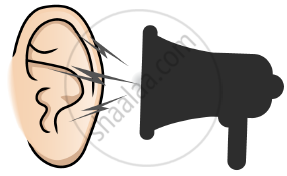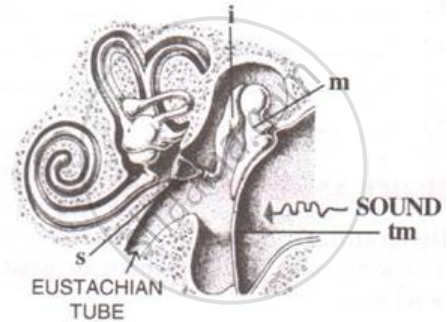Advertisements
Advertisements
Question
Complete the following sentence with appropriate Word
The parts of the human ear concerned with hearing are :
Options
Cochlea, ear ossicles and tympanum
Semicircular canals, utriculus and sacculus
Eustachian tube, tympanum and utriculus
Perilymph, ear ossicles and semicircular canals
Solution
Cochlea, ear ossicles, and tympanum
APPEARS IN
RELATED QUESTIONS
Photoreceptor cells are present in __________.
(A) blind spot
(B) retina
(C) cochlea
(D) cornea
The unit of frequency is ______.
Eye : Optic nerve : : Ear : ___________
Given below is a representation of a kind of pollution. Study the same and answer the questions that follow

(i) Name the kind of pollution.
(ii) List any three common sources of this pollution.
(iii) Mention three harmful effects of this pollution on human health.
(iv) Explain the term ‘Pollutant’.
(v) Name two soil pollutants
Mention the exact location of the Eustachian tube
Given in the box below are a set of 14 biological terms. Of these, 12 can be paired into 6 matching pairs. Out of the six pairs, one has been done for you as an example.
Example : endosmosis - Turgid cell.
Identify the remaining five matching pairs :
| Cushing’s syndrome, Turgid cell, Iris, Free of rod and cone cells, Colour of eyes, Hypoglycemia, Active transport, Acrosome, Addison’s disease, Blind spot, Hyperglycemia, Spermatozoa, Endosmosis, Clotting of blood. |
State the main function of the Eustachian tube
Perilymph or endolymph (Which one surrounds the organ of Corti ?)
The three parts of human ear contributing in hearing are-
Name the following:
The part which equalises the air pressure in the middle and external ear.
Name the following:
The ear ossicle attached to the tympanum.
Note the relationship between the first two words and suggest the suitable word for the fourth place.
sound : ear drum :: Dynamic balance : ……
Mention the exact location of the following :
Incus
Name that part of ear which vibrates when outside sound falls on it.
The diagram alongside represents the structure of the human ear.
(i) Write the names of the parts labelled a to g.
(ii) State briefly the functions of the parts b, d, and g.
(iii) Name the main division of the ear.
(iv) Which is the smallest bone in the human body?
(v) What is labyrinth?

The figure below is the sectional view of a part of the skull showing a sense organ:

What do you call the part shown in the form of a spiral? What is its function?
The figure below is the sectional view of a part of the skull showing a sense organ:

Name the part labeled 'tm'. What is its function?
With reference to human ear answer the question that follow:
Name the part of the ear associated with Static balance.
With reference to human ear answer the question that follow:
Name the part of the ear associated with dynamic balance.
- Draw a neat and well labelled diagram of the membranous labyrinth found in the inner ear.
- Based on the diagram drawn above in (i), give a suitable term for each of the following descriptions:
- The structure responsible for hearing.
- The sensory cells that help in hearing.
- The membrane-covered opening that connects the middle ear to inner ear.
- The nerves that carry impulses from the ear to the brain.
- The tube which equalises the air pressure on either side of the ear drum.
